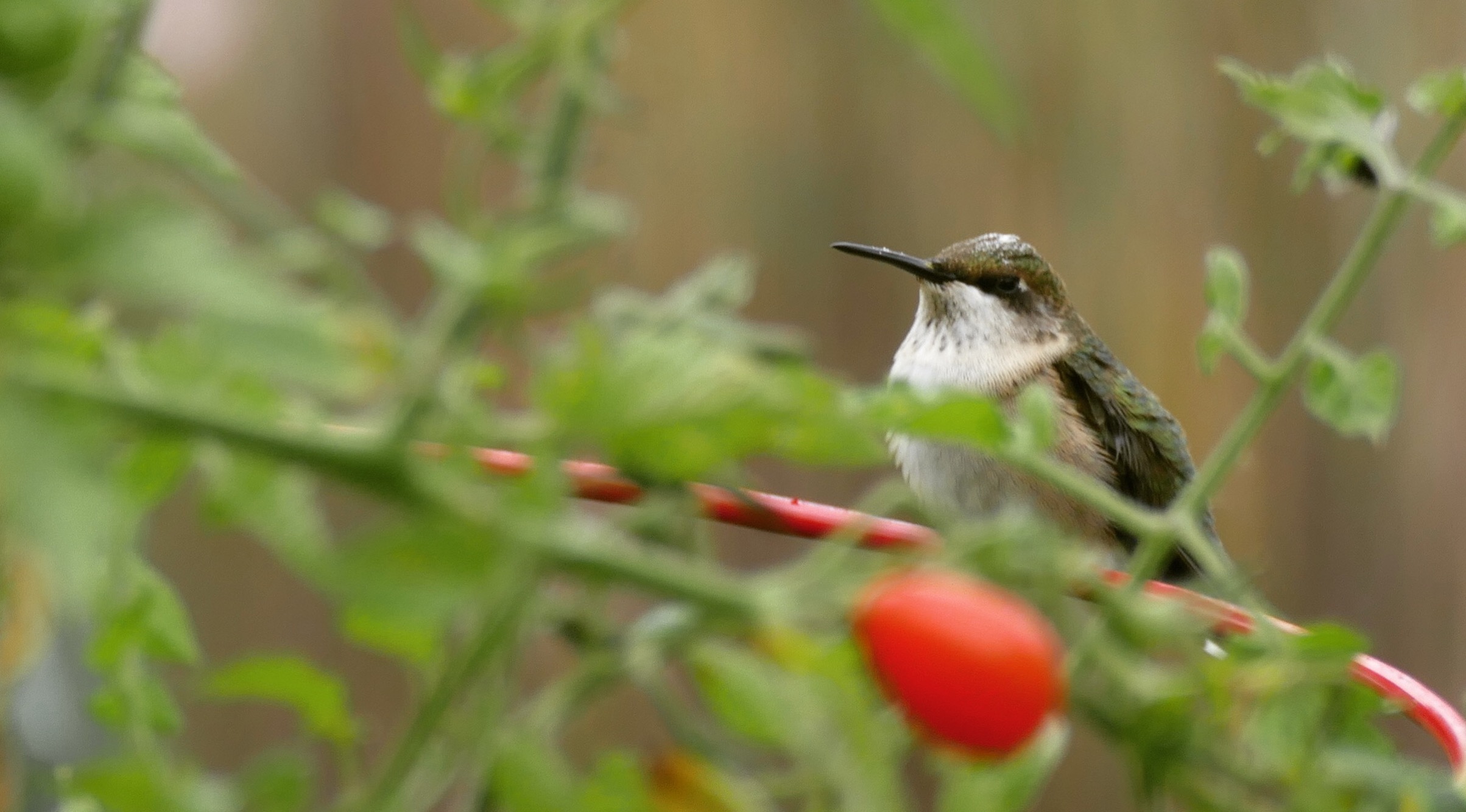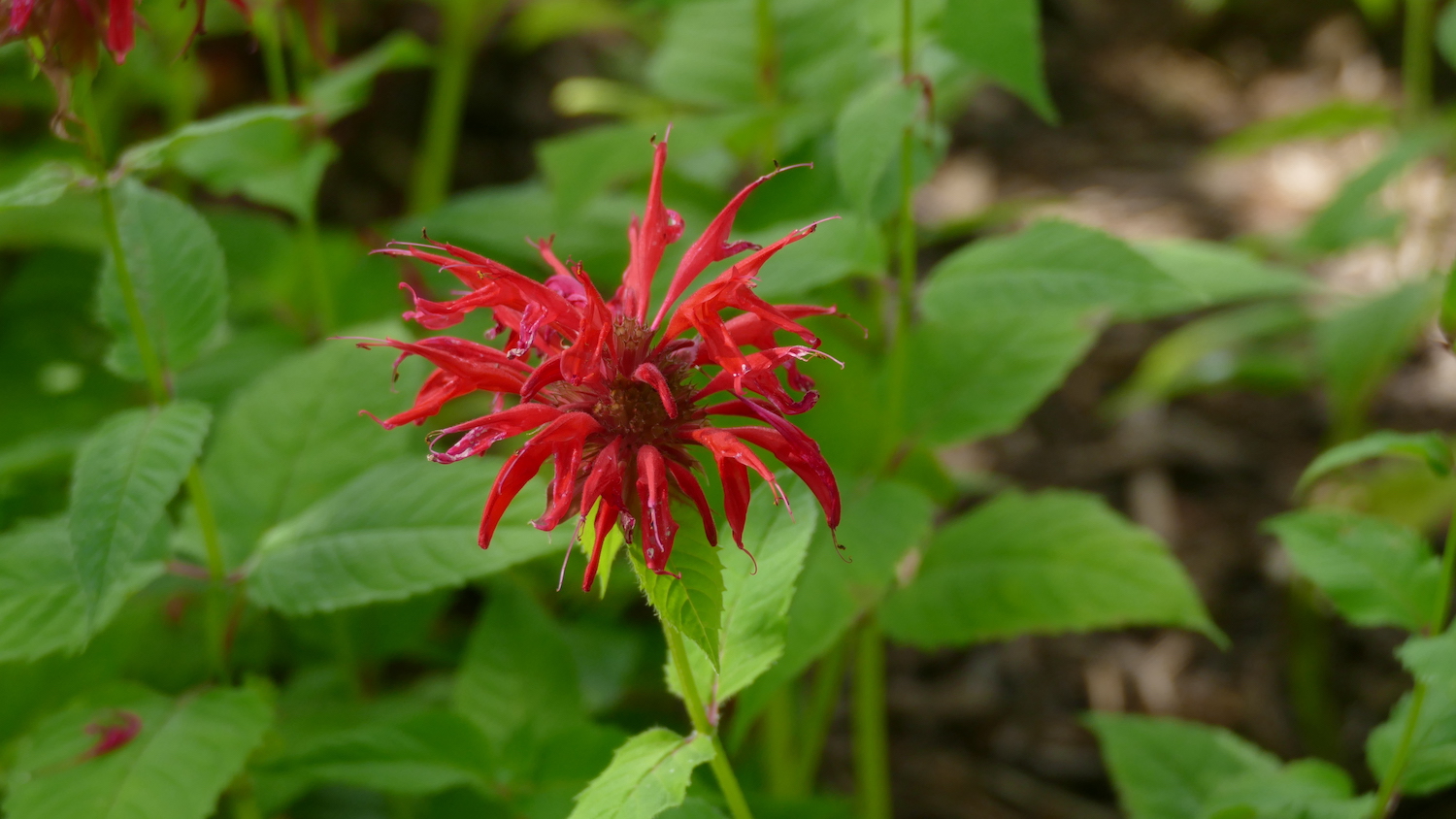Attracting Hummingbirds to Your Garden
There is something magical about seeing a hummingbird darting from flower to flower in your garden. Some mornings, I sit on the back steps with my coffee in hopes of spotting a hummingbird, and in late summer, I am often rewarded with a glimpse of metallic green and red.
Attracting hummingbirds to your garden is a matter of giving them the plants and conditions in which they thrive. Here are four things to remember:

1) We only have one hummingbird species in Minnesota
While there are reported sightings of other species of hummingbird, such as the Calliope or Rufous hummingbird in the state, the one you are seeing in your backyard is the ruby-throated hummingbird. It weighs less than a quarter of an ounce with a metallic green backside. The males have what look like ruby sequins on their throats, while the females have a grayish throat color. You will probably never spot their nests, which are the size of a thimble and perched high in the branches of nearby trees, especially oak, birch, poplar and hackberry.

2) Plant red to attract hummingbirds
If you want hummingbirds to visit your garden, plant flowering trees, shrubs, perennials and annuals with red or orange colored, tubular blossoms. Among their favorites are vines such as honeysuckle and cardinal flower. Rhonda Fleming Hayes, the Northern Gardener Pollinators columnist, recently recommended cypress vine, hyacinth bean vine and scarlet runner bean vine, among others for attracting hummingbirds.

Hummingbirds also will get nectar from red bee balm and jewelweed, and I’ve seen them on anise hyssop and zinnias as well. Keep plants deadheaded for maximum bloom and nectar. Of course, native plants are among their favorites, too, including liatris, columbine, butterfly milkweed and red elderberry, if you have room for a large shrub. Hummingbirds also eat insects, such as mosquitos and even spiders, so don’t use pesticides in your garden.
3) Add water and perches.
Like all birds, hummingbirds need a bath now and then. They especially like to fly through a mist, so if you have a water feature with a small fountain that sprays water—they’ll be there! They also need places to perch while they rest (yes, they do rest from time to time!). I often see them sitting on the electrical wire to the house, but they also like the top of a tomato cage. Some gardeners with have exposed branches about 10 feet from feeders to give birds a place to perch.
4) Keep feeders clean and full.
Hummingbirds prefer to get nectar from flowers, but they will use feeders for supplemental nutrition. According to the Audubon Society, a solution of 1/4 cup refined white sugar per 1 cup of water is best. Boil the syrup on the stove to mix properly, let it cool and then fill your feeder. No need to add red dye. Feeders should be cleaned with hot water and maybe a bit of vinegar about once a week in cooler weather, twice a week if the temperatures are hot. If you aren’t attracting hummingbirds to your feeder, consider planting some red or orange flowers nearby. Don’t worry that your feeder will keep the hummingbirds here too long—they are genetically programmed to migrant when the time is right!
Watching birds visit your garden is fun and satisfying — there’s nothing like seeing a flash and knowing a hummingbird loves your garden as much as you do!

Ants are filling my hummingbird feeder the last two refills. What to do?
I learned several things I didn’t know! Thank you!